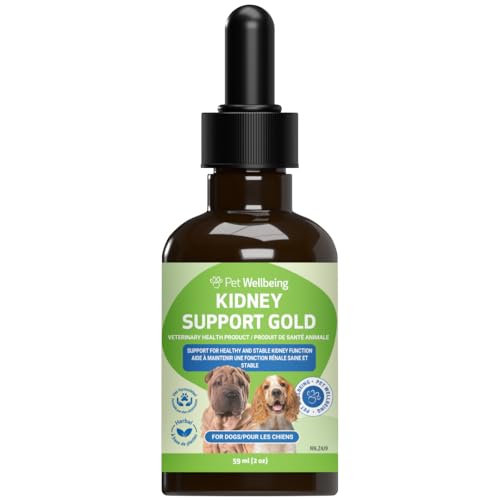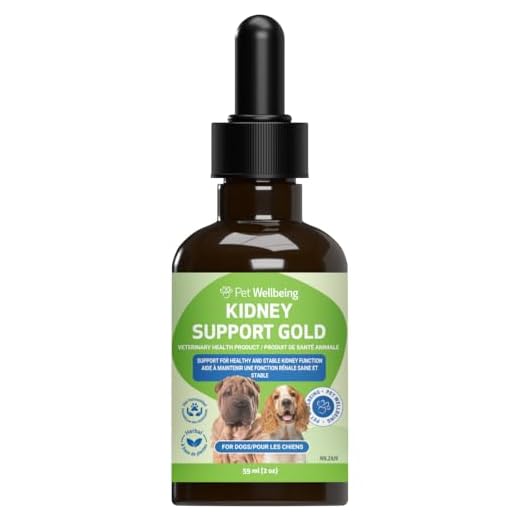




Watch for sudden changes in your pet’s behaviour, particularly if they seem lethargic or uninterested in activities they usually enjoy. A lack of energy could indicate an underlying health issue. If your furry friend is reluctant to eat or drink, take note. Loss of appetite can be an early warning sign that something is amiss.
Pay attention to their bathroom habits as well. Unusual frequency or straining during elimination often suggests discomfort. Keep an eye out for any unusual colours in urine or stool, as these can be indicators of internal stress. Additionally, excessive panting or difficulty breathing warrants immediate veterinary attention.
Monitor weight fluctuations closely. Sudden weight loss can be alarming and may point to serious health concerns. On the flip side, rapid weight gain can also signal an issue. If you notice either, consult with your vet promptly.
Lastly, observe any changes in your dog’s coat or skin. Dull fur or excessive shedding can signal nutritional deficiencies or health problems. If you notice any skin lesions or unusual lumps, seek advice from a professional. Early detection is key in managing your pet’s health effectively.
Recognising early signs of organ deterioration in canines
Pay close attention to subtle changes in your furry companion’s behaviour and health. These indicators can signal that something isn’t right.
- Appetite changes: A sudden decrease or increase in food intake can be alarming.
- Thirst variations: Increased or decreased water consumption often hints at underlying issues.
- Weight fluctuations: Unexplained weight loss or gain deserves immediate investigation.
- Energy levels: Noticeable lethargy or unusual hyperactivity might be a cause for concern.
- Bathroom habits: Changes in urination or defecation patterns can indicate problems.
- Vomiting: Occasional vomiting can be normal, but persistent episodes should not be ignored.
- Coat condition: A dull, dry, or patchy coat often reflects health issues.
- Breathing changes: Difficulty breathing or persistent coughing may suggest serious concerns.
- Behavioural shifts: Increased irritability or withdrawal from social interactions can be telling.
Regular veterinary check-ups are crucial. If you observe any of these signs, reach out to a vet for guidance. Early intervention can make a significant difference in your pet’s health.
Specific symptoms of kidney failure in canines
Recognising the signs of kidney distress is vital for timely intervention. Watch for increased water consumption and excessive urination. If your furry friend seems to drink more than usual and frequently needs to go outside, it may indicate a problem with kidney function.
Other noticeable symptoms
Changes in appetite are common; you might notice your pet becoming picky or refusing food altogether. Alongside this, weight loss can occur, as the body’s inability to process nutrients properly takes its toll. Look for signs of lethargy; your dog may seem less energetic, preferring to rest rather than engage in play or walks.
Behavioral changes
Bad breath, particularly if it has a strong, ammonia-like odour, can be a significant indicator. Additionally, vomiting and diarrhoea may appear as the body struggles to eliminate toxins. Keep an eye out for any unusual behaviours, like pacing or restlessness, which could suggest discomfort or pain.
| Symptom | Description |
|---|---|
| Increased Thirst | Drinking more water than usual. |
| Excessive Urination | Frequent need to urinate, sometimes in large amounts. |
| Poor Appetite | Refusing food or being selective about meals. |
| Lethargy | Decreased energy and interest in activities. |
| Vomiting | Frequent vomiting, possibly with signs of nausea. |
| Bad Breath | Strong, ammonia-like odour from the mouth. |
| Weight Loss | Noticeable loss of weight over time. |
If you observe any combination of these signs, consult a veterinarian promptly for a thorough examination and appropriate care. Early detection can significantly impact treatment options and the quality of life for your beloved companion.
Understanding Liver Failure Symptoms in Canine Health
Recognising jaundice is critical. This yellowing of the skin and eyes can indicate liver dysfunction. Take note if your furry friend’s gums appear pale or yellowish; this may signal underlying issues. Regular veterinary check-ups can help catch such symptoms early.
Behavioural Changes
Noticeable shifts in energy levels warrant attention. If your pooch seems lethargic or disinterested in activities they once loved, it could be linked to liver concerns. Increased thirst and urination are also red flags; these may suggest an imbalance in the body’s functions. Keep a close eye on their appetite as well–loss of interest in food can be a significant sign of distress.
Digestive Issues
Vomiting and diarrhoea, particularly if persistent, should prompt immediate evaluation. Changes in stool colour–especially light or grey stools–can indicate liver problems. Bile production is affected, leading to these alterations. Regular monitoring of your dog’s bathroom habits can provide valuable insights into their health.
Identifying Heart Failure Indicators in Dogs
Pay close attention to your pet’s breathing patterns. Rapid or laboured breathing, especially when resting, can be an alarming signal. If your dog is panting excessively or seems to struggle for air, it’s time to consult a vet.
Watch for signs of lethargy and decreased activity. If your furry friend is reluctant to engage in play or seems unusually tired after normal activities, this might indicate underlying cardiovascular issues.
Monitoring Appetite and Weight
Changes in appetite are significant. A decrease in food intake or sudden weight loss can hint at heart problems. Keep an eye on your dog’s body condition; sudden weight gain, especially around the abdomen, can also signal fluid retention due to heart strain.
Evaluating Coughing and Gagging
Frequent coughing or gagging may indicate fluid buildup in the lungs or heart enlargement. If you notice your dog coughing during exercise or at rest, document the frequency and duration, and share this with your veterinarian.
Observe for fainting episodes or weakness. If your dog collapses or shows signs of weakness during walks or playtime, this could indicate insufficient blood flow to vital organs.
Regular vet check-ups are crucial for early detection. Routine examinations can help identify issues before they become severe. Keep a close relationship with your vet and don’t hesitate to discuss any concerns you have about your pet’s health.
Recognising Signs of Respiratory Distress in Canines
Pay attention to any changes in your pet’s breathing patterns. Rapid or laboured breathing can indicate serious issues. Watching for an increased respiratory rate, where your furry friend is panting excessively even when at rest, is crucial. If you notice your dog struggling to breathe, it’s time to seek veterinary help.
Observing Behavioural Changes
When my dog, Max, started to isolate himself, it raised alarm bells. Dogs in respiratory distress often exhibit lethargy or seek out cooler places. If your pet is reluctant to engage in play or seems unusually tired, this could signal a problem. Keep an eye on their posture; dogs may adopt a stance with their neck extended or their abdomen moving rapidly as they try to catch their breath.
Physical Signs to Monitor
Check for any unusual sounds during respiration, such as wheezing or coughing. These noises can indicate obstructions or inflammation in the airways. Additionally, observe the colour of your dog’s gums. A bluish tint can signify a lack of oxygen, requiring immediate intervention. If you notice any swelling around the face or neck, don’t hesitate to contact your vet.
Always trust your instincts. If something feels off with your canine companion, it’s better to err on the side of caution and seek professional advice. Your vigilance can make all the difference.
Behavioural Changes Associated with Organ Dysfunction in Canines
When noticing shifts in your pet’s behaviour, it’s crucial to observe them closely. Increased lethargy is often one of the first signs that something may be amiss. My dog, Max, started spending more time lying down, and his usual playful antics seemed to vanish overnight. This was a clear signal that I needed to investigate further.
Another indicator can be a change in appetite. If your canine companion suddenly loses interest in food or water, this could suggest underlying health issues. I remember the day Max sniffed his bowl and walked away. It was unusual for him, and I immediately scheduled a vet appointment.
Social withdrawal can also manifest during periods of health decline. If your furry friend begins to isolate themselves, it’s worth paying attention to. Max, who loved to greet everyone with enthusiasm, started hiding away during family gatherings. This behaviour change was alarming and prompted me to have him examined.
Vocalisation patterns might change as well. Some dogs may start to whine or bark more, expressing discomfort or distress. Conversely, a normally vocal pet might become eerily quiet. I noticed Max was quieter than usual, which felt out of character for him. This change was a red flag, leading me to seek veterinary advice.
Additionally, altered bathroom habits can be telling. Straining to urinate or an increase in frequency can indicate issues that require immediate attention. Once, I noticed Max was spending an unusual amount of time outside, and it turned out he was struggling with kidney concerns. Recognising these signs early can make a significant difference in treatment options.
Always trust your instincts as a pet owner. If something feels off, don’t hesitate to consult with a veterinarian. Early intervention can drastically improve the quality of life for your dog. Remember, being observant and proactive is key to ensuring your furry friend stays healthy and happy.
When to Seek Veterinary Help for Suspected Organ Issues
If you notice any alarming changes in your pet’s behaviour or health, such as increased thirst, lethargy, or unusual eating habits, it’s crucial to contact your vet immediately. Early intervention can significantly improve outcomes in cases of serious health concerns.
Recognising Warning Signs
Pay close attention to symptoms like vomiting, diarrhoea, or changes in urination. These may indicate underlying health problems that require professional assessment. If your furry friend is panting excessively or seems restless, don’t hesitate to reach out to your veterinarian. These signs can often precede more severe complications.
Monitoring Behaviour and Health
Changes in behaviour, such as increased aggression or withdrawal, can also signal issues. If your canine companion displays any of these signs, consider consulting with a veterinarian for a thorough evaluation. Addressing these concerns sooner rather than later can be life-saving. Additionally, ensuring your dog receives proper nutrition is key; for instance, if you have a German Shepherd, you might want to explore the best dog food for german shepherd to gain weight to support their health.








